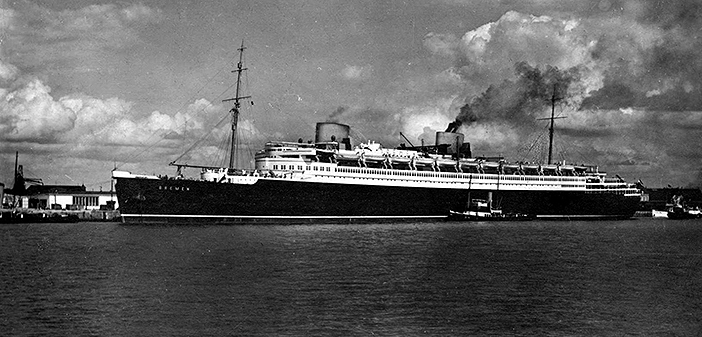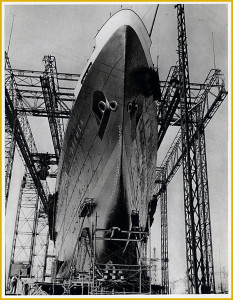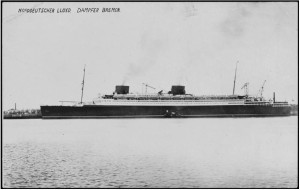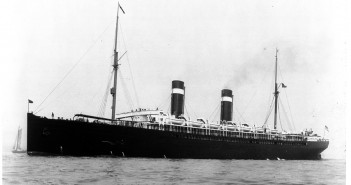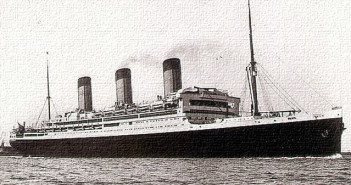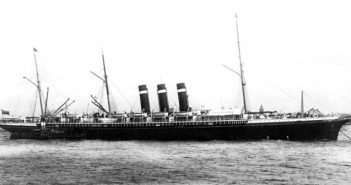After losing most of its ocean liner fleet in World War I, by the late 1920s Norddeutscher Lloyd was once again ready to become a major player on the North Atlantic. The company’s first post war superliner would be Bremen (1929), a ship that would become a trendsetter in speed, style and luxury. While most other liners of the era strove to imitate English country homes, French chateaus or big city hotels, Bremen unapologetically embraced the then avant garde Art Deco movement. She was cutting edge when the term applied only to knives and axes.
Conveying both beauty and strength in a time when economic depression left much of the world unemployed and embittered, particularly Germany, the streamlined Bremen shined as a beacon of beauty and hope.
The 51,656 GRT liner was 939 feet long and 102 feet at beam. She could carry 2,228 passengers: 811 first class , 500 second class, 300 tourist class and 617 third class, and well as over 900 crewmembers.
Bremen was powered by four steam turbines driving quadruple screws at a rated speed of 27.5 knots.
Bremen was launched on the afternoon of Thursday, 16 August 1928 by German President Paul von Hindenburg (only a day after the launch of her sister ship, Europa, in Hamburg). On her maiden voyage, Bremen averaged 27.83 knots and won the Blue Riband for the fastest westbound Atlantic crossing. She beat her own record on the return, averaging 27.92 knots. However, when her sister ship, Europa, entered service the following year, she took her fleetmate’s title away.
Bremen won the Blue Riband again in June 1933. But on 16 August 1933, the fifth anniversary of Bremen’s launch, Italian Line’s Rex took the Blue Riband from the German liner, completing a westbound transatlantic crossing in 4 days, 13 hours and 58 minutes at an average speed of 28.92 knots. The crossing marked the one and only time that an Italian-registered liner won the high-speed honor.
At the outbreak of World War II, on the sweltering evening of 30 August 1939, Bremen quietly slipped her moorings on Manhattan’s West Side, darkened her lights and quietly sailed out of New York Harbor. Her stealthy departure marked the start of dramatic mad dash to a friendly or neutral harbor, dodging Royal Navy warships along the way. A week later, camouflaged with gray paint applied by her crew while underway, she slipped into the frigid confines of Murmansk. Three months later Bremen reached her homeport, Bremerhaven.
It was all for naught, however. Bremen never carried another paying customer. She was destroyed by fire in 1941 in a blaze apparently set by a disgruntled crewmember.
But for a few remarkable years Bremen was the world’s most exciting ocean liner—and one of the best ever.


